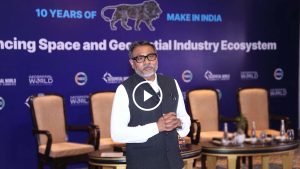The word ‘intelligence’ immediately conjures an image of dark-suited men in dark sunglasses with a tightly grasped briefcase. Geospatial Intelligence adds additional mystery in the form of secret imagery of missile sites.
Indeed the world of military intelligence and peaceful uses of satellite imagery were set so far apart that never the twain would meet. Advances in technology and resource management have changed that. Now the two not only meet but overlap.
Satellite imagery resolution has improved to a point where commercially available imagery can produce maps at the level of detail that is needed for city ward maps and rural cadastral maps, not to mention the detection and location of defence and offense assets.
Further, the term intelligence now encompasses both military and civil requirements. The need to be able to observe and track military activities also extends to the need for monitoring activities that are inimical to human life and nature.
Both need fast information transfer from acquisition to delivery via analytics. The need to track a band of terrorists is no less critical than to predict the path of a cyclone.
From detection to interdiction, and to prevention needs fast analytics. Data Science, AI, ML and Deep Learning are the tools. Some of these can work on the Edge and provide near real-time analytics.
An interesting demonstration of fast computing using satellite data on a Web Services platform on the Cloud has also established another possibility of fast information turnaround.
An old technology, ELINT has been given a new lease of life through RF sensors that can track dark vessels – ships that have switched off their AIS. This has been used to track ships involving clandestine operations which could include illegal breaching of sanctions as well as illegal fishing in protected waters.
Humanitarian crisis management in times of war and in times of natural or man-made disasters is another area where geo-intelligence plays an important role.
The most recent example is the ongoing Ukraine-Russia conflict where populations have been subjected to denial of food, health facilities and electric power. Locating such clusters and reaching them aids tests the capabilities of geospatial technologies.
Disasters due to violent weather events brought on by Climate Change have lent an impetus to the development of world weather Digital Twins which can then predict possible threats, particularly to vulnerable areas like low-lying islands and launch protection measures.
Geo-intelligence is the need of the times which have become very complex in terms of conflict between nations, between humans, and between humans and nature. Meaningful information can lead to thoughtful actions, which in turn can help humankind be at peace with each other and with nature.
Disclaimer: Views Expressed are Author's Own. Geospatial World May or May Not Endorse it








